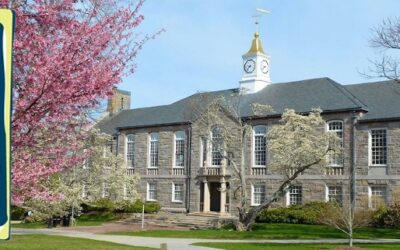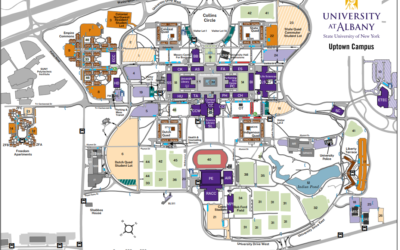News from the Gateway Team
FIRST…A REMINDER!
If you click a link to the Gateway and see only a blank page with Gateway header and footer, just go to the url in the browser and remove the ”s” from https:// so that it reads http:// (Like this: http://opdgig.dos.ny.gov/#/home) You can trust us! This will be resolved with the next iteration of the Gateway….
New Focus Page!
On November 30th 2020, we went live with our first new Focus Area in almost 4 years! The Gateway now hosts a Brownfield Opportunity Areas Focus page highlighting the important work this Unit within our office does across New York State. The BOA program folks and Gateway Team jointly make up the Focus Area Team which put in excellent work developing this focus page. The Focus Area team has started work on stories about how the Office is working on environmental justice through its Brownfield work and how their work helps re-envision waterfronts. While we haven’t added a focus area panel on the homepage yet, you can easily find the Focus page by clicking the “Focus” dropdown on the homepage banner and selecting “Brownfield Opportunity Areas”.
Stories – Update & Development
We have had an excellent story on Living Shorelines on our Climate Change & Resilience Focus page since the focus page launched over 4 years ago. With the help of a federal grant from NOAA and a partnership with NYSERDA, we’ve done some ground-breaking work on developing monitoring protocols for shoreline management measures. We have also become steeped in community resilience planning and principles since this story was launched. This growth in knowledge and experience necessitated an update to the Living Shorelines story, which was completed and pushed out to the Gateway on March 2nd of this year. This revamp has taken what was a good compelling story and made it a great compelling story with some new graphics and updated content! Check it out here.
As mentioned above, the Team has started work on stories for the Brownfield Opportunity Areas focus page, they have also been working with the South Shore Estuary Program on another story for that focus page on Submerged Aquatic Vegetation (SAV)…keep your eyes peeled for this one soon!
DOS Risk Areas
Some of you may know that our Climate Change & Resilience folks developed guidelines for a community resilience planning process and conceptualized a way to highlight flood and erosion risk not entirely represented by regulatory maps or inundation models. Our GIS Team partnered with the NOAA Office of Coastal Management to take that concept and develop Risk Areas for the maritime coast. These inaugural risk areas, incorporated into the resilience planning process, were used in the planning effort following Hurricanes Sandy & Irene and Tropical Storm Lee. Since that time, in response to extreme high Lake levels in 2017 & 2019, we developed risk areas for Lake Ontario which extend from Niagara Falls, along the Lake, and down the St. Lawrence River to Massena, these were made available on the Gateway in early Summer 2019. The DOS GIS Team was researching data layers for developing Hudson River Risk Areas when they learned of an improvement that could be made to the Lake Ontario Risk Areas, those changes were incorporated and the updated Lake Ontario Risk Areas were made available on the Gateway last August. Then, the Team went back and completed work on developing the Hudson River Risk Areas last October. These new Risk Areas are not on the Gateway yet but will be soon and in the interim requests for the data will be considered. The GIS Team is now working on developing Risk Areas for our final coastal area along Lake Erie, these should be completed and available on the Gateway sometime this Summer. Finally, because it’s always good to check your work, we are revisiting the Risk Area development process to determine if there are new modeling efforts or other tool products that can/should be considered for folding into the Risk Area development process. We’ll keep you updated on any upgrades to risk areas on the Gateway!
New Datasets Added!
During the past year-plus, we have added 28 new datasets to the Gateway running the gamut from LWRP grants and eligible water bodies to BOA sites, Surface Aragonite, fish species such as Silver Hake and Scup, pipeline areas, seagrass beds in the South Shore Estuary, Lake Ontario shoreline classifications and Risk Areas…and more! To date, there are 745 datasets available for access and viewing on the Gateway…kick around and see if we’ve got something you’re interested in…and if we DON’T, let us know and we’ll see if we can do anything about that.
We want to highlight the Long Island South Shore Benthic Habitat 2018 dataset uploaded a year ago because a valuable change detection product resulted from it. It shows the stunning change in eelgrass beds from 2002 to 2018. We will be highlighting this in the new SAV (Submerged Aquatic Vegetation) story coming out soon. You can access the 2002 and 2018 Benthic Habitat datasets through the South Shore Estuary Reserve Data Viewer. The 2018 dataset is pre-loaded. To load the 2002 dataset, expand the Biological and Habitat datasets and select Long Island South Shore Benthic Habitat 2002. This mapping effort was carried out in partnership with the Governor’s Office of Storm Recovery (GOSR), NOAA Office of Coastal Management, NY Department of State, NYS DEC, and many other partners. The 2018 dataset is an update of the 2002 mapping conducted by our Office and NOAA Coastal Services Center.
The Numbers
Sometime back in early February of this year, the Gateway hit a big benchmark, we surpassed a million actions taken by users!
- From the first day of work remotely, March 17th to today the Gateway received over 16,000 visits, and only 8% of those left the site after only visiting one page…indicating that over 90% of visitors were on the Gateway because they meant to be there.
- During the past 13 months, users averaged 12 actions per visit during an average visit duration of 4 minutes 40m seconds and visited over 59,000 pages. All 50 states and 3 U.S. territories have visited the Gateway and on average we get visits from 28 states outside of New York and 14 countries every month.
- To date, the Gateway has received over 82,000 visitors since launching on September 29, 2015.
- The longtime average is now nearly 1240 user visits each month.
- As of 22 April 2021, there have been over 341,000 pageviews, over 1,038,000 actions, and the average monthly bounce rate is 11%. There have been over 417,000 minutes or over 6954 hours spent on the Gateway.
- Fun fact: 6954 hours translates to 869 eight hr workdays or 3.34 five-day-week work years… So, if a person spent every single weekday, all 8 hrs, holidays included, working on the Gateway, it would take them 3.34 yrs to equal this amount of time… 😊
We’ve said it before, but the Team continues to be amazed and gratified to see the continued use of the Gateway and we all thank you for your continued use and support! We hope you find even more uses and information on the Gateway as we work to improve it in the coming year!
Social Media
You can stay up to date on Facebook and/or by following our Twitter feed. Please like us and share us on Facebook and retweet!
About
The Gateway does have an About page so if you’re new to the Gateway or need a refresher please follow this About link. You can also learn about the Office of Planning and Development (OPD) on the same About page.
Feedback
As always, please don’t hesitate to provide feedback on your visit to the Gateway so that we may continue to improve on its usefulness and your experience.




